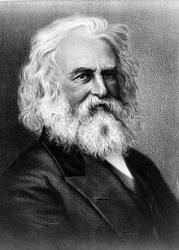Planning worship?
Check out our sister site, ZeteoSearch.org,
for 20+ additional resources related to your search.
- |
User Links
Search Results
[Chant] (Towner 34432)
Appears in 4 hymnals Composer and/or Arranger: D. B. Towner Incipit: 34432 14323
[Chant] (Towner 34432)
The Reaper and the Flowers
Author: Henry Wadsworth Longfellow Appears in 38 hymnals First Line: There is a reaper, whose name is Death Used With Tune: [There is a reaper, whose name is Death]
The Reaper and the Flowers
Der Schnitter
Author: J. A. Reiß; Herm. von Berge Appears in 7 hymnals First Line: Es ist ein Schnitter, der heißt Tod Used With Tune: [Es ist ein Schnitter, der heißt Tod]
Der Schnitter
The Reaper and the Flowers
Author: Henry W. Longfellow Hymnal: Towner's Male Choir Nos. 1, 2, 3, 4 Combined #96 (1894) First Line: There is a reaper, whose name is Death Languages: English Tune Title: [There is a reaper, whose name is Death]
The Reaper and the Flowers
The Reaper and the Flowers
Author: Henry Wadsworth Longfellow Hymnal: One Hundred Gospel Hymns #22 (1902) First Line: There is a reaper, whose name is Death Languages: English Tune Title: [There is a reaper, whose name is Death]
The Reaper and the Flowers
Der Schnitter
Author: J. A. Reiß; Herm. von Berge Hymnal: Neue Zions-Lieder #132 (1919) First Line: Es ist ein Schnitter, der heißt Tod Languages: German Tune Title: [Es ist ein Schnitter, der heißt Tod]
Der Schnitter
D. B. Towner

1850 - 1919 Composer of "[Chant] (Towner 34432)" Used pseudonyms Robert Beverly, T. R. Bowden
==============================
Towner, Daniel B. (Rome, Pennsylvania, 1850--1919). Attended grade school in Rome, Penn. when P.P. Bliss was teacher. Later majored in music, joined D.L. Moody, and in 1893 became head of the music department at Moody Bible Institute. Author of more than 2,000 songs.
--Paul Milburn, DNAH Archives
D. B. Towner
Henry Wadsworth Longfellow

1807 - 1882 Person Name: Henry W. Longfellow Author of "The Reaper and the Flowers" in Towner's Male Choir Nos. 1, 2, 3, 4 Combined Longfellow, Henry Wadsworth , D.C.L. was born at Portland, Maine, Feb. 27, 1807, and graduated at Bowdoin College, 1825. After residing in Europe for four years to qualify for the Chair of Modern Languages in that College, he entered upon the duties of the same. In 1835 he removed to Harvard, on his election as Professor of Modern Languages and Belles-Lettres. He retained that Professorship to 1854. His literary reputation is great, and his writings are numerous and well known. His poems, many of which are as household words in all English-speaking countries, display much learning and great poetic power. A few of these poems and portions of others have come into common use as hymns, but a hymn-writer in the strict sense of that term he was not and never claimed to be. His pieces in common use as hymns include:—
1. Alas, how poor and little worth. Life a Race. Translated from the Spanish of Don Jorge Manrique (d. 1479), in Longfellow's Poetry of Spain, 1833.
2. All is of God; if He but wave His hand. God All and in All. From his poem "The Two Angels," published in his Birds of Passage, 1858. It is in the Boston Hymns of the Spirit, 1864, &c.
3. Blind Bartimeus at the gate. Bartimeus. From his Miscellaneous Poems, 1841, into G. W. Conder's 1874 Appendix to the Leeds Hymn Book.
4. Christ to the young man said, "Yet one thing more." Ordination. Written for his brother's (S. Longfellow) ordination in 1848, and published in Seaside and Fireside, 1851. It was given in an altered form as "The Saviour said, yet one thing more," in H. W. Beecher's Plymouth Collection, 1855.
5. Sown the dark future through long generations. Peace. This, the closing part of his poem on "The Arsenal at Springfield," published in his Belfrey of Bruges, &c, 1845, was given in A Book of Hymns, 1848, and repeated in several collections.
6. Into the silent land. The Hereafter. A translation from the German.
7. Tell me not in mournful numbers. Psalm of Life. Published in his Voices of the Night, 1839, as "A Psalm of Life: What the heart of the Young Man said to the Psalmist." It is given in several hymnals in Great Britain and America. In some collections it begins with st. ii., "Life is real! Life is earnest."
The universal esteem in which Longfellow was held as a poet and a man was marked in a special manner by his bust being placed in that temple of honour, Westminster Abbey. [Rev. F. M. Bird, M.A.]
--John Julian, Dictionary of Hymnology (1907), p. 685
=======================
http://en.wikipedia.org/wiki/Henry_Wadsworth_Longfellow
Henry Wadsworth Longfellow
J. A. Reitz
1838 - 1904 Person Name: J. A. Reiß Author of "Der Schnitter" in Neue Zions-Lieder
J. A. Reitz


 My Starred Hymns
My Starred Hymns

